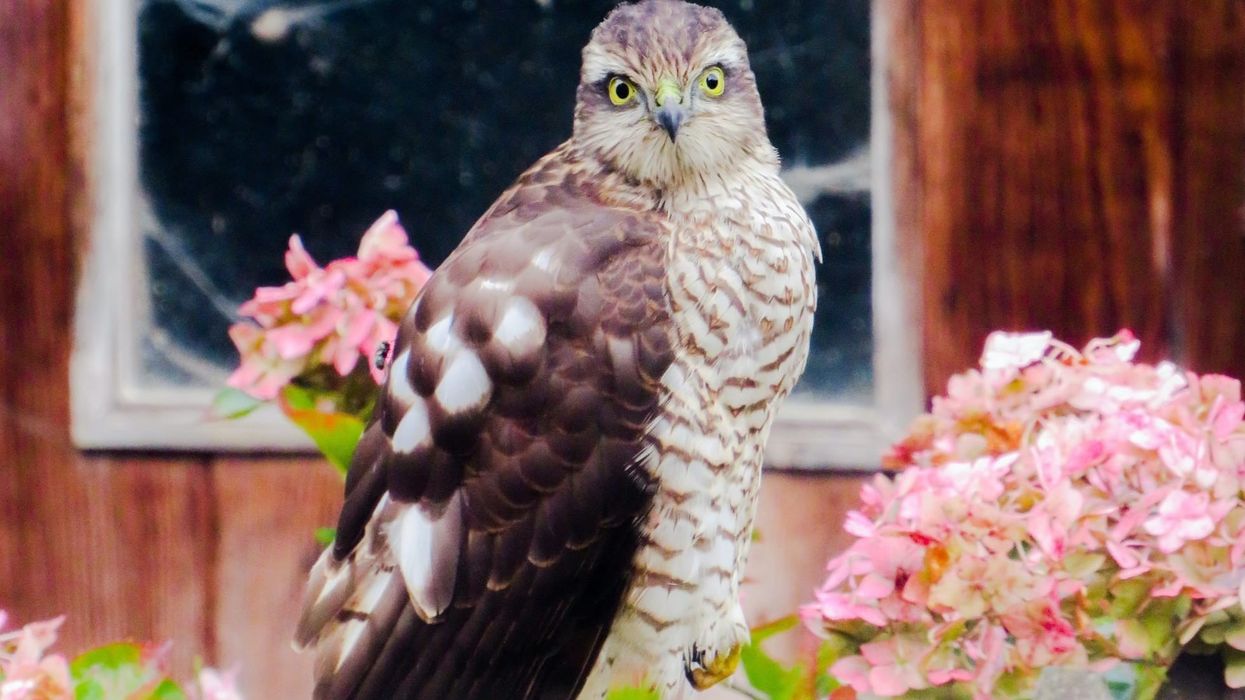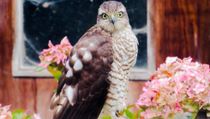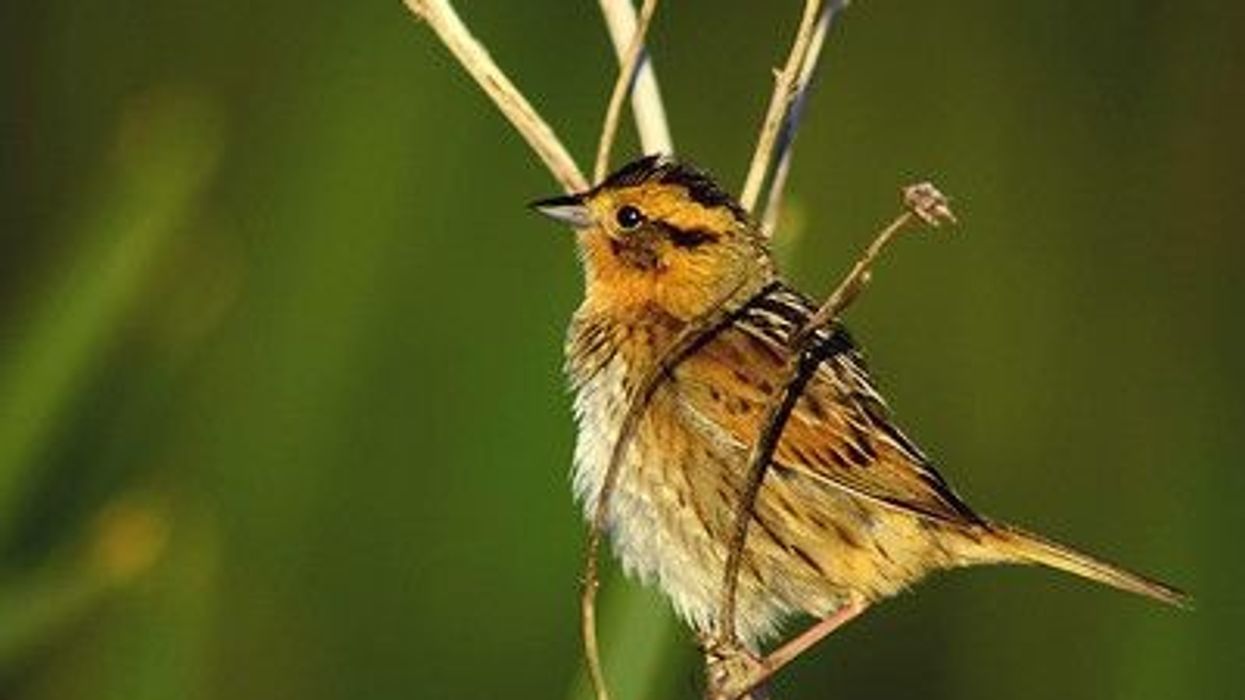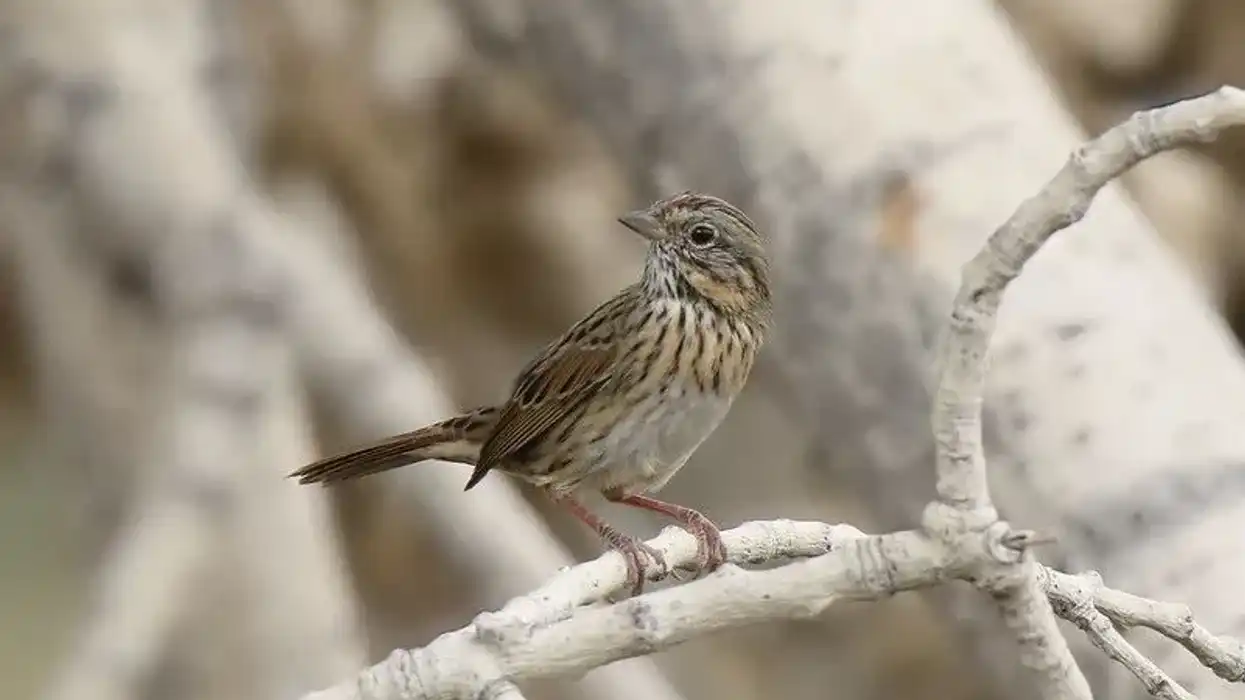Fun Eurasian Sparrowhawk Facts For Kids

Content
- What type of animal is a Eurasian Sparrowhawk?
- What class of animal does a Eurasian Sparrowhawk belong to?
- How many Eurasian Sparrowhawks are there in the world?
- Where does a Eurasian Sparrowhawk live?
- What is a Eurasian Sparrowhawk habitat?
- Who do Eurasian Sparrowhawks live with?
- How long does a Eurasian Sparrowhawk live?
- How do they reproduce?
- What is their conservation status?
- What does Eurasian Sparrowhawk look like?
- How cute are they?
- How do they communicate?
- How big is a Eurasian Sparrowhawk?
- How fast can a Eurasian Sparrowhawk fly?
- How much does a Eurasian Sparrowhawk weigh?
- What are the male and female names of the species?
- What would you call a baby Eurasian Sparrowhawk?
- What do they eat?
- What is the scientific name for the Eurasian Sparrowhawk?
- How do Eurasian Sparrowhawks chirp?
- Did you know...
- How can you separate a Eurasian Sparrowhawk from a hoary redpoll?
- What seeds does a Eurasian Sparrowhawk eat?
Do you sometimes hear all the little birds in the garden making frantic alarm calls? Stay alert! Somewhere near the little birds, you might witness a hunting Sparrowhawk. The next few minutes of reading the facts of these Eurasian Sparrowhawks will make you agree that hunting is an apt word for these bird species.
A Eurasian Sparrowhawk is often seen in swift hunting flights chasing small birds or perching quietly in the shade, and you can quickly identify this bird species with its slim body, long tail, rounded wings, and thin yellow legs.
They are efficient at capturing and killing small birds with a surprise attack. They have a conflict with humans as they have been blamed for the widespread decline of many songbirds.
By moving feeding stations around your garden and keeping them close to cover, you will reduce the chance of a Sparrowhawk killing your garden birds.
Considering all the above facts, don't you agree that Sparrowhawks are birds of prey? Continue reading to learn exciting facts about this bird species, and don't miss reading our other articles on the fox sparrow and lark sparrow.
Eurasian Sparrowhawk Interesting Facts
What type of animal is a Eurasian Sparrowhawk?
The Eurasian Sparrowhawk (Accipiter nisus) belongs to the Accipitridae family of birds of prey. They are also known as the Northern Sparrowhawk or simply the Sparrowhawk too.
What class of animal does a Eurasian Sparrowhawk belong to?
The Eurasian Sparrowhawks breed belongs to the Aves class of animals. Accipiter is the genus that includes the Eurasian Sparrowhawk and closely related species such as the rufous-breasted Sparrowhawk, Japanese Sparrowhawk, Northern goshawk, and Cooper's hawk. They belong to the Accipitridae family, and there are 64 genera and 237 species in the Accipitridae family.
How many Eurasian Sparrowhawks are there in the world?
The Eurasian Sparrowhawk population is 2,200,000-3,300,000 mature individuals as per the IUCN Red List.
Where does a Eurasian Sparrowhawk live?
The Eurasian Sparrowhawk (Accipiter nisus) is a common species in the temperate and subtropical regions, with an approximate global range of 9,100,000 square mi. They are found in northern parts of Europe, Asia, and Africa.
Some birds migrate south for the winter, some to North Africa (some as far as equatorial east Africa) and India, while others stay put or scattered.
While Eurasian sparrowhawks tend to hunt near the edges of wooded areas, migrant birds are found in any habitat. Juveniles migrate faster than adults, with juvenile females moving ahead of juvenile males.
What is a Eurasian Sparrowhawk habitat?
In their range, Eurasian Sparrowhawks are found in various woodland types and more open areas with sparse trees. Unlike the Northern goshawk, its larger relative, they can also be found in gardens and urban areas, and if there is a sufficient density of tall trees, they will also breed in city parks.
Who do Eurasian Sparrowhawks live with?
The Sparrowhawk is a solitary bird outside of the breeding season. It sticks to a small countryside area, visiting only a few favorite hunting spots in the tropical and subtropical areas.
How long does a Eurasian Sparrowhawk live?
The estimated lifespan of a Eurasian Sparrowhawks breed is 4-20 years. A male Sparrowhawk can live for seven or eight years on average, while a female Sparrowhawk can live for 10-11 years.
How do they reproduce?
Eurasian Sparrowhawk pairs are monogamous during the breeding season, but their partners can change from year to year. Sparrowhawks compete for mates by performing a rollercoaster ride to attract females in the spring. Sparrowhawk populations are made up of territorial breeding pairs and non-territorial non-breeding individuals known as floaters.
Due to the protective action of established nesting pairs, floaters are unable to gain nesting territory. When breeding pairs leave their territory, the nesting area is easily occupied by a floater. The floater will then breed the following year.
Breeding pairs of Eurasian Sparrowhawks mate in the early spring and lay eggs between late April and early June every year. An individual reaches reproductive maturity between the ages of one and three.
The female's ability to breed effectively is directly proportional to her body weight. The female's body weight is influenced by food availability, which is linked to a good male hunter.
Females that gain weight early in the season have an easier time laying their eggs. Females lay four to five eggs each year on average and after 33 days of incubation, the eggs hatch.
The chicks are fed by females for the first 8-14 days after hatching from the eggs. The young birds take their first flight from the nest between 24-28 days post-fledging.
They are fed for another 28-30 days by their parents while rising and practicing flight close to the nest. After their parents avoid feeding them, the young hawks scatter.
Sparrowhawks prefer dense woodland to build their nests during the breeding season. Nesting sites for Eurasian Sparrowhawks include the fork of a tree near the trunk, a lower canopy horizontal branch, or the tall shrub top. Conifers are favored if they are available.
What is their conservation status?
Sparrowhawks were once on the brink of extinction in many parts of the world, but they are now abundantly available and one of the most common birds of prey in the United Kingdom. Despite human persecution by hunters and landowners and the use of pesticides, population growth is steady or rising in most parts of Europe.
There are now over one million breeding pairs worldwide and a large number of non-breeding individuals.
Population densities in England have been estimated to range from 10-72 pairs per 38 square mi.
Worldwide, populations are now considered stable, and Eurasian Sparrowhawks are no longer considered endangered. This bird species is currently listed by IUCN Red List as Least Concern (LC), and its population is stable.
Eurasian Sparrowhawk Fun Facts
What does Eurasian Sparrowhawk look like?
A Eurasian Sparrowhawk has a small head, a slender body, short wings, and a long tail with a squared or notched tip. Females and juveniles have brown barred upper parts.
Males have gray upper parts, a streaked orange-brown front, and a slate-gray head on top with an orange-brown profile, making them smaller than females. Females also have a pale patch on the nape of the neck behind the ear.
Long legs and a strongly hooked beak are also features of this genus used for plucking feathers and tearing prey apart. Their long legs and toes have evolved to help them capture and eat birds.
Any guess on the eye color of this bird? The young Sparrow hawks usually have greenish-yellow eyes that become brighter yellow during the first couple of years of life. The eyes of some older hawks will turn orange or, on rare occasions, red.
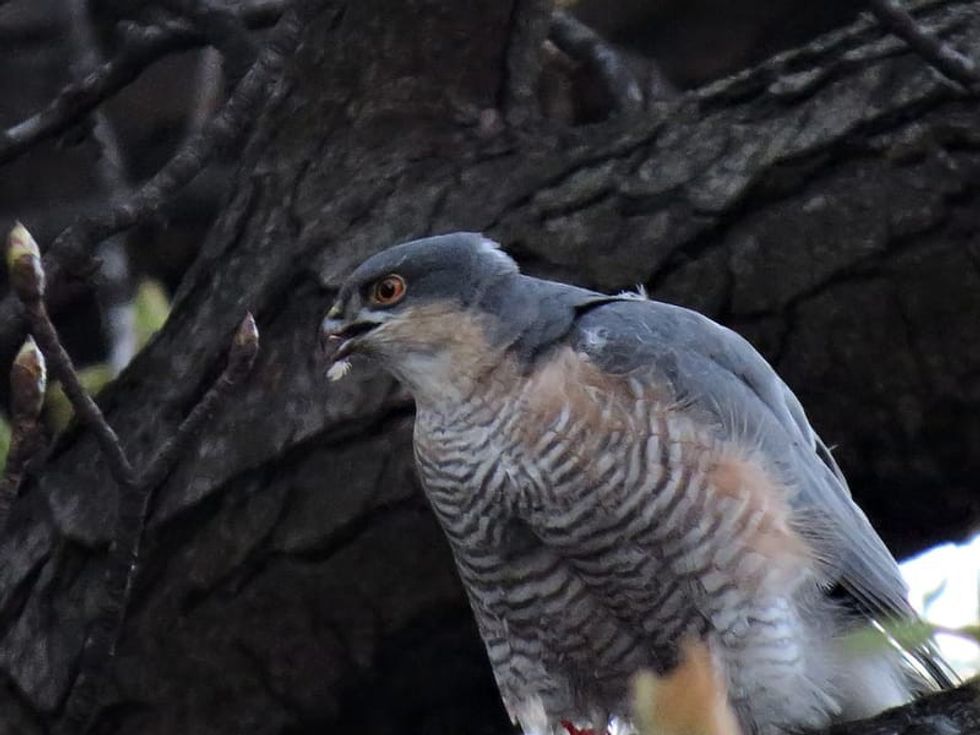
How cute are they?
Sparrowhawks are cute. Their eyes can make anyone turn toward them. However, few people find these small birds to be scary.
How do they communicate?
The Eurasian Sparrowhawk (Accipiter nisus) is usually a silent bird, but it may call to communicate with other species members, especially when threatened by a territorial intruder or humans. A softer call is used when bringing in prey or calling to another species member of the opposite sex.
The main call is described as a shrill cackling that varies in speed depending on the situation. When a male brings them food, females make a distinct call.
How big is a Eurasian Sparrowhawk?
The Eurasian Sparrowhawk is a small bird. The male Eurasian Sparrowhawk length range is 11-14 in, while a female's length range is 13-16 in. The wingspan of this bird is 23-32 in. When compared to Goshawks, they are much smaller.
How fast can a Eurasian Sparrowhawk fly?
Eurasian Sparrowhawks are smaller, slenderer, have shorter wings, a square-ended long tail, and quicker wingbeats, and can fly 1.2-1.9 mi per day while hunting. A Sparrowhawk's normal flying speed range is 18-25 mph, but it can reach 31 mph in short bursts.
How much does a Eurasian Sparrowhawk weigh?
Adult males weigh 3.8-7 oz (110-196 g) and adult females weigh 6.5-12 oz (185-342 g). At hatching, the average weight of the nestlings is 0.7 oz (20 g).
Female Sparrowhawks weigh about twice as much as males, one of the most significant differences between sexes in any bird of prey. Although this allows her to bring additional body reserves for reproduction and go several days without eating, it also makes her a less agile hunter than the male.
What are the male and female names of the species?
A musket is the falconer's term for a male Eurasian Sparrowhawk; it is derived from the Old French word ‘moschet’ and derives from the Latin word 'musca', which means ‘fly’.
The female Eurasian Sparrowhawk is referred to as the priest's bird in the medieval Book of Saint Albans, whereas the musket is referred to as the clerk's bird. Female Sparrowhawks are brownish but have horizontal bars on their breast feathers and a grayer back and wings larger than males.
What would you call a baby Eurasian Sparrowhawk?
The baby of Eurasian Sparrowhawks is called a chick. Young Sparrowhawks (chicks) have chestnut-brown feather edges and brown wings and backs. Brown stripes or chevrons run across their breast feathers.
What do they eat?
The diet of a Sparrowhawk consists almost entirely of small birds. Despite their preference for feathered prey, they have been observed capturing several small mammals, including bats, in flight.
Food sources include thrushes, sparrows, finches, and tits, and females are known to eat even a pigeon. Squirrels also would be a great catch for a Sparrowhawk, particularly if they are young and easier to catch. This bird of prey victim is picked up and eaten even when alive.
If you think that the Sparrowhawks eat any bird, you will be mistaken! By weeding out the ill and unwary, Sparrowhawks keep their prey populations safe.
Female Sparrowhawks are bigger than male Sparrowhawks, allowing them to prey on larger birds and sometimes killing anything as big as a Wood Pigeon. Males consume about 1.4-1.8 oz (40-50 g) of food per day, while larger females consume between 1.8-2.5 oz per day (50-70 g), depending on their behavior.
This small bird hunts by surprise, using hedges, tree belts, copses, orchards, and other covers near woodland areas; these criteria also determine its habitat selection. The Sparrowhawk hides until birds approach, then breaks cover and flies out quickly and low.
A pursuit can ensue, with the hawk even flipping upside-down to catch the victim from below or trailing it through the woods on foot. It will stoop down from great heights to catch prey in temperate and subtropical areas.
How many days do you think these small birds can stay without food? Well, the answer is, a male Sparrowhawk can go two or three days without food, but a female Sparrowhawk can go up to six days.
What is the scientific name for the Eurasian Sparrowhawk?
Accipiter nisus is the scientific name for the Eurasian Sparrowhawk. The scientific name comes from the Latin words accipiter, which means crow, and Nisus, which means Sparrowhawk.
The king of Megara (Nisus), was converted into a Sparrowhawk after Scylla (his daughter) cut off a lock of his purple hair to send it to Minos ( Nisus' enemy), according to Greek mythology.
How do Eurasian Sparrowhawks chirp?
The adults Eurasian Sparrowhawk are often seen flying overhead with a chirping call of 'kek kek kek.'
Did you know...
Did you know that Accipiter nisus, Eurasian Sparrowhawk, is an expert bird hunter, catching over 120 different species of birds ranging in size from a pigeon to goldcrest to a pheasant?
Are you wondering if the Eurasian Sparrowhawk has any predators? Yes, they do! The Barn owl, Tawny owl, Northern goshawk, Peregrine falcon, Golden eagle, eagle owl, Red fox, Stone marten, and Pine marten are all-natural predators of this bird prey species.
Have you ever heard of humans' conflict with birds? The Eurasian Sparrowhawk often causes conflict with humans since it preys on common bird species, such as game birds, songbirds, and racing pigeons. Because of the predation of Eurasian Sparrowhawks on bird species, landowners and gamekeepers have deliberately destroyed Sparrowhawk populations.
How can you separate a Eurasian Sparrowhawk from a hoary redpoll?
The hoary redpoll is a small songbird and can be identified with its notched tail and a thick-based small bill that appears pushed in. This species' plumage is often fluffed up, giving it a portly appearance. Hoary Redpolls are gray-brown streaked, pale, whitish species.
The forecrown of older birds has a tiny red patch. Their tail and wings are a darker gray color, with prominent white wing bars. The rosy tint on its body makes it even cuter.
On the other hand, the Eurasian Sparrowhawk species can be identified as having a bluish-gray back and orangey-brown barred underparts, chest, and abdomen. This bird of prey is distinguished by its bright yellow or orange skin, yellow eyes, long yellow legs, and long talons.
What seeds does a Eurasian Sparrowhawk eat?
The Eurasian Sparrowhawk, Accipiter nisus, is a carnivorous bird that eats small woodland birds and does not feed on seeds as its primary diet. However, in the 1950s, Organochlorine insecticides (chemicals that destroy unwanted insects) were applied to seeds before they were planted, and small birds consumed the seeds.
Sparrowhawks then ate these birds.
The concentrations were high enough to kill some and hinder others; affected birds laid shells of eggs that are weak and cracked during incubation. However, after removing pesticides from the seeds, the population recovered, and it is now fairly normal.
Here at Kidadl, we have carefully created lots of interesting family-friendly animal facts for everyone to discover! Learn more about some other birds from our chipping sparrow fun facts and chicken hawk facts pages.
You can even occupy yourself at home by coloring in one of our free printable Eurasian sparrowhawk coloring pages.
We Want Your Photos!
More for You
Sources
https://www.britannica.com/animal/Eurasian-sparrowhawk
https://en.wikipedia.org/wiki/Eurasian_sparrowhawk
https://animaldiversity.org/accounts/Accipiter_nisus/
https://ebird.org/species/eurspa1
https://animalia.bio/eurasian-sparrowhawk
See All
Bachelors in Business Administration

Aashita DhingraBachelors in Business Administration
Based in Lucknow, India, Aashita is a skilled content creator with experience crafting study guides for high school-aged kids. Her education includes a degree in Business Administration from St. Mary's Convent Inter College, which she leverages to bring a unique perspective to her work. Aashita's passion for writing and education is evident in her ability to craft engaging content.
Bachelor of Science specializing in Computer Science

Chandan ShuklaBachelor of Science specializing in Computer Science
With a Bachelor's degree in Computer Science from Aryabhatta College, University of Delhi, Chandan is a skilled and passionate technophile. He has completed a machine learning training program and is adept in various programming languages. He has been working as a content writer for two years while also striving to become a proficient tech professional.
Disclaimer
1) Kidadl is independent and to make our service free to you the reader we are supported by advertising. We hope you love our recommendations for products and services! What we suggest is selected independently by the Kidadl team. If you purchase using the Buy Now button we may earn a small commission. This does not influence our choices. Prices are correct and items are available at the time the article was published but we cannot guarantee that on the time of reading. Please note that Kidadl is a participant in the Amazon Services LLC Associates Program, an affiliate advertising program designed to provide a means for sites to earn advertising fees by advertising and linking to Amazon. We also link to other websites, but are not responsible for their content.
2) At Kidadl, we strive to recommend the very best activities and events. We will always aim to give you accurate information at the date of publication - however, information does change, so it’s important you do your own research, double-check and make the decision that is right for your family. We recognise that not all activities and ideas are appropriate for all children and families or in all circumstances. Our recommended activities are based on age but these are a guide. We recommend that these ideas are used as inspiration, that ideas are undertaken with appropriate adult supervision, and that each adult uses their own discretion and knowledge of their children to consider the safety and suitability. Kidadl cannot accept liability for the execution of these ideas, and parental supervision is advised at all times, as safety is paramount. Anyone using the information provided by Kidadl does so at their own risk and we can not accept liability if things go wrong.
3) Because we are an educational resource, we have quotes and facts about a range of historical and modern figures. We do not endorse the actions of or rhetoric of all the people included in these collections, but we think they are important for growing minds to learn about under the guidance of parents or guardians.
